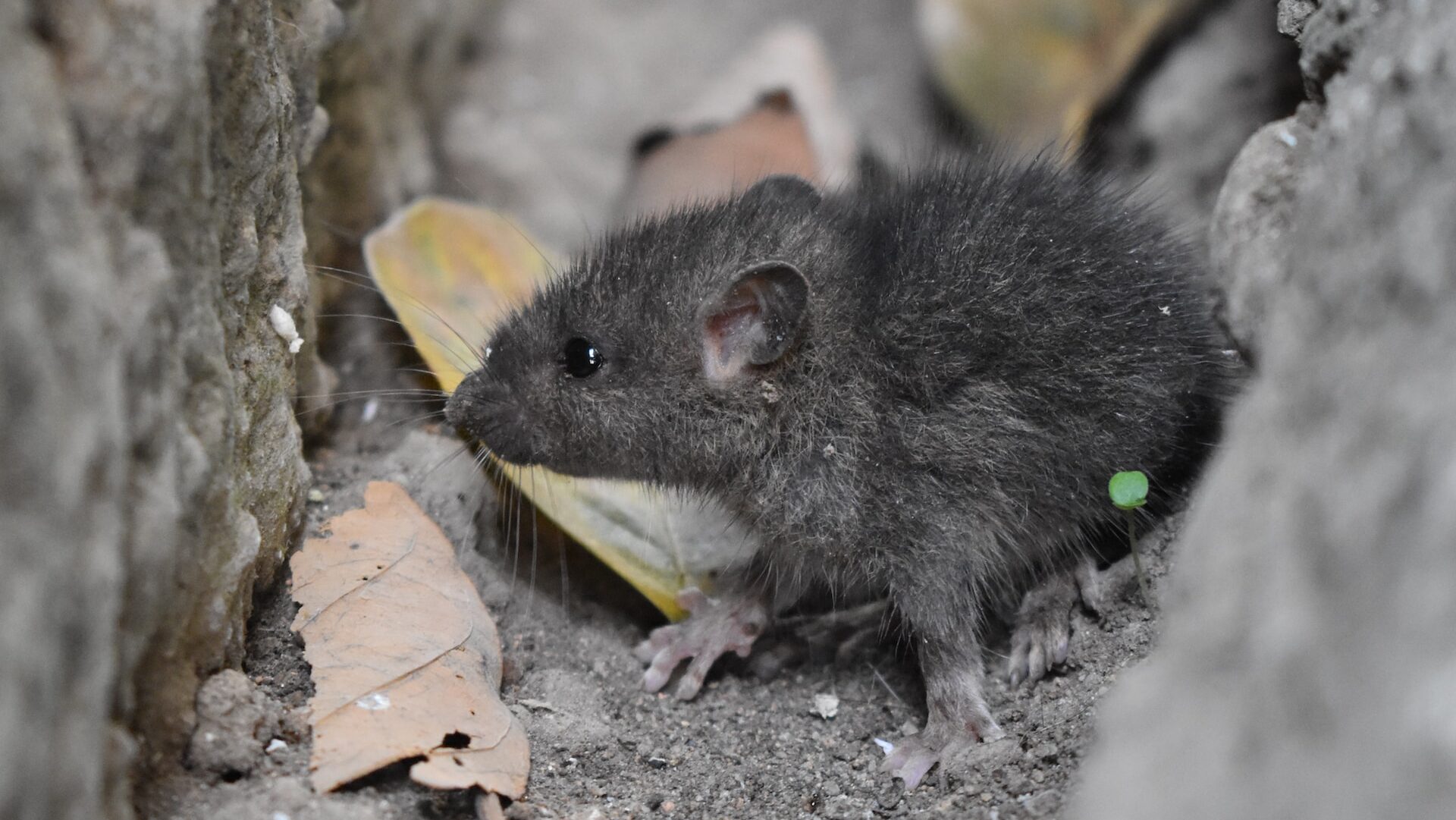Mice and rats can squeeze through the tiniest cracks, exploiting even the smallest structural vulnerabilities. Unlike larger pests such as bed bugs, they rely on a wide range of food sources, which often leads them indoors. By following this guide, you’ll learn to spot these intrusions and make your home less inviting to these unwanted guests.
Understanding where and how these critters enter is the first step in resolving the issue. Stay alert for droppings, gnaw marks, and other telltale signs, which are often the first indications of an infestation. With the right knowledge and tools, you can tackle the problem head-on and reclaim your peaceful, mouse-free living space.
Understanding Rodent Entry Points
It’s essential to recognize the signs of rodent presence, such as mouse droppings and grease marks, which indicate active mouse paths. These can often be found along interior walls or near potential food sources. Observing these signs is the first step in effective mouse control and in pinpointing where the mouse problem may be originating from.
Rodents, especially mice, are notorious for their ability to create and exploit entry points in your home. Gnaw marks on furniture or along baseboards are a clear indication of their presence. By identifying these entry points, you can begin to take measures to prevent further intrusion and protect your home from a full-blown infestation.
Common Entry Points Used by Mice
Mice seek warmth and shelter, especially during colder months, making your home an ideal target. They often enter through mouse holes found near the ground in laundry rooms, cabinets, and drawers where they can find pet food or other edibles. These rodents are also known to build nests in secluded areas, using materials found within the home.
Spotting signs of mouse activity, such as chew holes or signs of a rodent infestation, is critical. Homeowners should be proactive and clean up food immediately to avoid attracting mice and rodents. If you suspect a mouse infestation, it’s wise to contact a professional pest control company. They can apply specialized techniques like spreading talcum powder or flour to reveal footprints and track mouse movement, or inspecting objects such as door corners where mice frequently leave marks.

Structural Weaknesses that Invite Mice
Identifying and repairing structural weaknesses is key to keeping your home secure. To find mice entry points, look for areas where mice can easily slip through, such as where trash cans are stored against the house or where grease marks indicate frequent rodent traffic. Mice are adept at detecting and exploiting these vulnerabilities to gain entry into your home.
By sealing these weak spots, you reduce the risk of a mouse infestation for once and for all. Regularly inspecting and maintaining your property to fix cracks, holes, and other damages not only keeps mice out but also preserves the integrity of your home. Neglecting these areas can provide mice with easy access and a safe haven to thrive and multiply.
The Role of Outdoor Clutter in Attracting Mice
Outdoor clutter can significantly contribute to attracting mice to your home. Piled-up debris, overgrown vegetation, and unsecured trash cans provide perfect hideouts for rodents and make it easier for them to find mice entry points. Keeping your yard tidy and trash cans sealed is an effective strategy to deter these pests.
Regular yard maintenance, including trimming bushes and removing potential nesting materials, can help in minimizing the chances that mice will settle near your home. A clean and organized outdoor space gives fewer opportunities for mice to sneak in, reducing the risk of infestation and the associated dangers to your household.
Pre-Inspection Preparations
Before you begin your search for where mice are entering your home, it’s important to gather the necessary tools and take appropriate safety measures. Ensuring you have a flashlight, gloves, and a mask can help you safely inspect for signs of mice without risking exposure to contaminants. Additionally, having a plan for sealing detected entry points can expedite the process once you’ve located them.
Being prepared also means understanding the behaviors and habits of mice, which can give you clues about where to look. Remember, these rodents are looking for access to food and shelter, so start your inspection in areas where food is stored or crumbs are likely to be found. By being thorough in your preparations, you can increase your chances of detecting and addressing the issue effectively.
Essential Tools for Detecting Mice Entry
To effectively find where mice are getting into your home, you’ll need a few essential tools. A flashlight will help you spot mouse droppings and entry points in dark corners and behind appliances. A mirror or smartphone camera can be used to check tight spaces and behind furniture without having to move heavy objects.
Consider also having caulk, steel wool, or wire mesh on hand to temporarily block any discovered openings until permanent repairs can be made. These tools will not only aid in detection but also provide immediate solutions to prevent further entry, ensuring that you’re one step ahead in your mouse control efforts. Check more about this here.
Safety Measures Before Investigating for Mice
Before delving into mouse detection, it’s crucial to prioritize your safety. Wearing gloves and a respirator mask can protect you from harmful bacteria found in mouse droppings. It’s also a good idea to have disinfectant spray or wipes to clean up any droppings or urine trails you may encounter during your investigation.
Remember that mice have been known to carry diseases, so minimizing contact with any signs of their presence is important. Ensure you have access to food securely stored to avoid attracting more rodents during your inspection. Taking these precautions will help keep you and your family safe while you work to identify and seal off entry points.
Step-by-Step Detection of Mice Access
Finding where mice are infiltrating your home requires a methodical approach. Start by examining the interior walls, where you might find evidence of rodents living within the structures. Mice often leave behind droppings, gnaw marks, or trails of debris that can lead you to their entry points.
Areas that provide ideal nesting materials or seclusion are especially at risk for rodent entry. Look for signs of disturbance in insulation, storage boxes, and other quiet areas where mice might nest. By following a step-by-step process, you can thoroughly inspect each potential entry zone and take measures to block them off.
Inspect Your Foundation for Openings
A sturdy foundation is critical to a mouse-proof home. Inspect the base of your house for any holes and gaps that might be letting mice in. Mice are adept climbers and can find their way into the smallest openings, so it’s important to check for any cracks or crevices that could be used as entryways.
Once you locate these vulnerabilities, take immediate action to seal them. Weather stripping, caulk, or concrete patch can be used to fill these openings and prevent future breaches. Paying close attention to the foundation can save you from more extensive mouse problems down the line.
Examine Basement and Crawl Spaces for Entry Points
Basements and crawl spaces are often the first places mice enter a home. Look for holes in walls, especially where utility lines enter, as these are common areas for mice to squeeze through. Even tiny openings can be gateways for these pests, so be vigilant in your inspection.
Securing these areas with durable materials like metal mesh or steel wool can prevent mice from chewing their way in. Regular checks for signs of intrusion, such as droppings or nesting materials, can also help you catch any new entry points early before they become bigger problems.
Assess Exterior Walls for Cracks and Holes
Exterior walls are another critical area to check when looking for mouse entry points. Pay particular attention to where cable and gas lines enter your home, as these are often overlooked spots that mice use to get inside. Seal any openings you find to cut off these access routes.
Regularly inspecting and maintaining the exterior of your home can prevent mice from finding new ways to invade. Keeping walls in good repair and promptly addressing any damage can significantly reduce the likelihood of a mouse infestation.

Sealing and Preventing Future Entry
After identifying where mice are getting into your home, it’s time to take action to seal these areas and prevent future entry. This step is crucial in maintaining a rodent-free environment and protecting your home from the damages and health risks associated with mice.
Use durable materials to repair and reinforce entry points, and consider adding additional deterrents like door sweeps and screens to potential access areas. By being thorough and proactive in sealing your home, you can create a lasting barrier against rodent invasions.
Filling Gaps Around Pipes and Utility Lines
Areas where pipes and utility lines enter your home are common spots for mice to squeeze through. Even small gaps can be big enough for a mouse to get inside, so it’s essential to inspect these areas carefully and fill any openings you find with the appropriate materials.
Expanding foam, caulk, or cement can be used to seal these gaps and keep mice out. Regular maintenance around these areas can help ensure that your defenses remain strong over time, preventing mice from gaining easy access to your home.
Securing Vents, Drains, and Chimneys With Screens
Mice are adept climbers and can squeeze through tiny openings, making unsecured vents, drains, and chimneys prime entry points. To prevent access, it’s essential to install wire mesh screens specifically designed to keep rodents out while allowing airflow. The mesh should have holes small enough to prevent mice from passing through, generally a quarter inch or smaller in size.
When securing these potential entryways, ensure that the wire mesh is durable and properly affixed. Metal screens are preferable as they resist gnawing. Regularly check these barriers for signs of damage or rust that could compromise their effectiveness, and replace them when necessary to maintain a secure barrier against rodents.
Reinforcing Door and Window Seals
Doors and windows often have small gaps that can serve as an invitation to mice seeking shelter. Reinforcing these areas can significantly reduce the likelihood of a rodent intrusion. Install door sweeps on the bottom of doors, especially those leading to garages and basements, to block the small gaps that mice can use to enter your home.
For windows, ensure that all seals are intact and consider using weather stripping to close any openings. Inspect the integrity of window screens and replace them if they show signs of wear or have holes. These simple measures can make a big difference in keeping your home mouse-free.
Maintaining a Rodent-Free Environment
Once you’ve sealed off entry points, ongoing vigilance is key to keeping mice at bay. A multi-faceted approach that includes cleanliness, storage practices, and exterior maintenance can create an environment that is less appealing to rodents. Consistency in these efforts will significantly reduce the chances of a mouse finding its way into your home.
Remember, a house without attractants and harborage opportunities is less likely to experience a mouse control problem. By staying alert and proactive, you can enjoy a rodent-free living space and the peace of mind that comes with it.
Strategies for Keeping Your Kitchen Clear of Attractants
Mice are attracted to food and water, so a clean kitchen is a fundamental deterrent. Store dry goods in airtight containers and avoid leaving food out on counters. Regularly dispose of garbage and clean up crumbs and spills immediately. A tidy kitchen not only discourages mice but also contributes to the overall hygiene of your home.
Additionally, ensure that all food is put away before bedtime, as mice are nocturnal and often forage at night. Addressing leaky faucets and pipes can also help by cutting off water sources that might attract these pests. By maintaining these practices, you’ll reduce the likelihood of mice taking up residence in your kitchen.
Decluttering Your Garage to Prevent Nesting
A cluttered garage offers numerous hiding places and nesting materials for mice. To deter these unwanted guests, organize and regularly clean your garage. Store items off the floor and in sealed containers whenever possible. Avoid stacking boxes and other items against walls, as this can create hidden paths for mice to move around undetected.
Dispose of old newspapers, fabrics, and other potential nesting materials. By keeping your garage orderly and free of clutter, you eliminate the cozy environments that mice seek for nesting, making it less attractive for them to settle in.

Regular Yard Maintenance to Discourage Rodent Habitats
Outdoor maintenance plays a crucial role in mouse control around your home. Keep grass cut short and eliminate weeds to reduce outdoor nesting areas. Store firewood at least 18 inches off the ground and away from your home’s foundation. Trim tree branches and shrubs to prevent easy access to your roof and upper levels.
Remove any debris or garden clutter that could serve as a shelter for mice. By managing your landscaping and outdoor storage, you can discourage mice from nesting near your home and ultimately from finding their way inside.
Concluding Thoughts on Keeping Your Home Mouse-Free
To maintain a home free from mice and other pests, vigilance is key. Regular inspections around the foundation for cracks and gaps can help prevent these nimble invaders from gaining entry. It’s essential to keep garage doors in good repair since these large openings can provide easy access for rodents. Additionally, ensure that tree branches are trimmed away from the house to eliminate aerial pathways that mice might exploit.
Cleaning habits also play a crucial role; make it a habit to clean up spills and crumbs swiftly to avoid attracting pests. Food and debris should not be left out in areas like the kitchen, where they can entice mice seeking nourishment. Properly storing food, sealing holes around pipes, and minimizing nesting materials by keeping storage boxes off the ground can deter mice from establishing residence. By remaining alert to the signs that mice are attempting to settle in, and taking immediate action to address these hints, you can help safeguard your home against these unwelcome guests.

